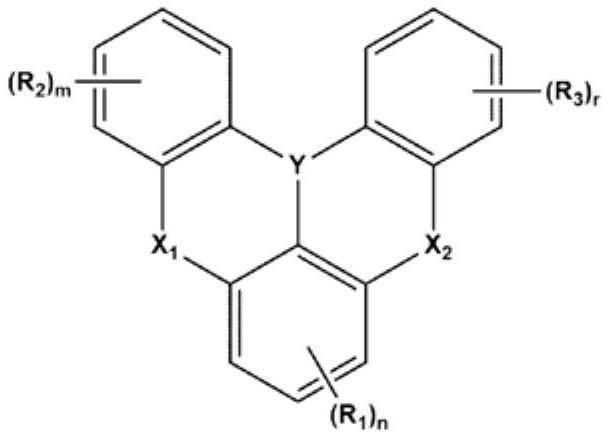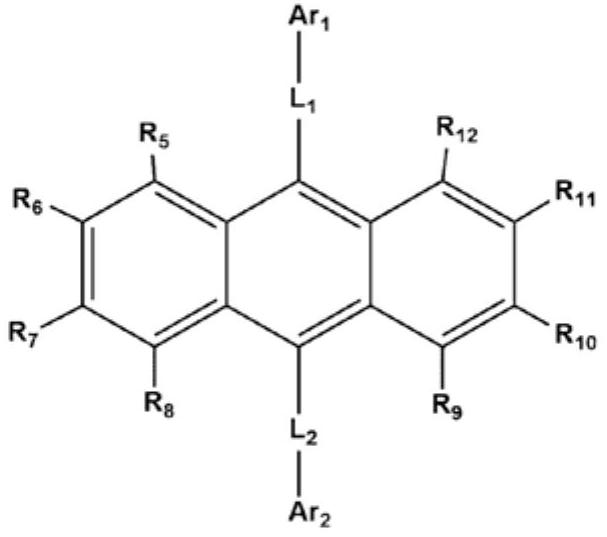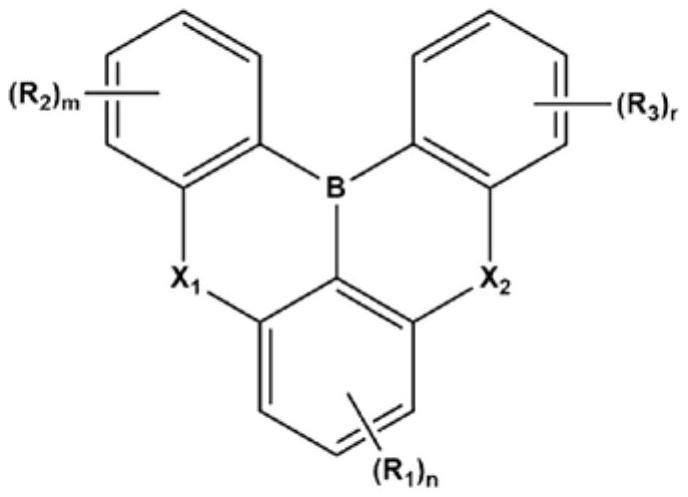Organic electroluminescent device
An electroluminescent element and luminescent technology, which is applied in the fields of electrical components, organic chemistry, and electric solid-state devices, can solve problems such as difficulty in reflecting deep blue, short life, and narrow luminescence spectrum.
- Summary
- Abstract
- Description
- Claims
- Application Information
AI Technical Summary
Problems solved by technology
Method used
Image
Examples
Synthetic example 1-1
[0137]
[0138] After dissolving 8.9 g (20 mmol) of starting material 1 in tert-butylbenzene (250 ml), it was cooled to 0°C. Under a nitrogen atmosphere, 24.7 ml (42 mmol) of a 1.7 M tert-butyllithium (tert-butyllithium) solution (in pentane) was added, followed by stirring at 60° C. for 2 hours.
[0139] The reaction was then cooled to 0 °C again, and 4.0 ml of BBr was added 3 (42 mmol) and stirred at room temperature for 0.5 hours. The reactant was cooled to 0° C., and 7.3 ml (42 mmol) of N,N-diisopropylethylamine (N,N-diisdopropylethylamine) was added, followed by stirring at 60° C. for 2 hours.
[0140] The reaction solution was cooled to room temperature, and the organic layer was extracted with ethyl acetate and water. After removing the solvent of the extracted organic layer, it purified by the silica gel column chromatography (DCM / hexane (Hexane)) method. Then, recrystallization and purification were performed using a DCM / acetone (Acetone) mixed solvent to obtain...
Synthetic example 1-2
[0143]
[0144] Except using 9.9 g (20 mmol) of starting material 1-3 instead of starting material 1-1, the experiment was carried out in the same manner as in Synthesis Example 1-1, and 2.16 g of the compound 1-1 was obtained with a yield of 23.0%. 3.
[0145] MS (MALDI-TOF) m / z: 470[M]+
Synthetic example 1-3
[0147]
[0148] Except using 10.6 g (20 mmol) of starting material 1-5 instead of starting material 1-1, the experiment was carried out in the same manner as in Synthesis Example 1-1, and 2.3 g of the compound 1-1 was obtained with a yield of 23.2%. 5.
[0149] MS (MALDI-TOF) m / z: 502[M]+
PUM
 Login to View More
Login to View More Abstract
Description
Claims
Application Information
 Login to View More
Login to View More - R&D
- Intellectual Property
- Life Sciences
- Materials
- Tech Scout
- Unparalleled Data Quality
- Higher Quality Content
- 60% Fewer Hallucinations
Browse by: Latest US Patents, China's latest patents, Technical Efficacy Thesaurus, Application Domain, Technology Topic, Popular Technical Reports.
© 2025 PatSnap. All rights reserved.Legal|Privacy policy|Modern Slavery Act Transparency Statement|Sitemap|About US| Contact US: help@patsnap.com



